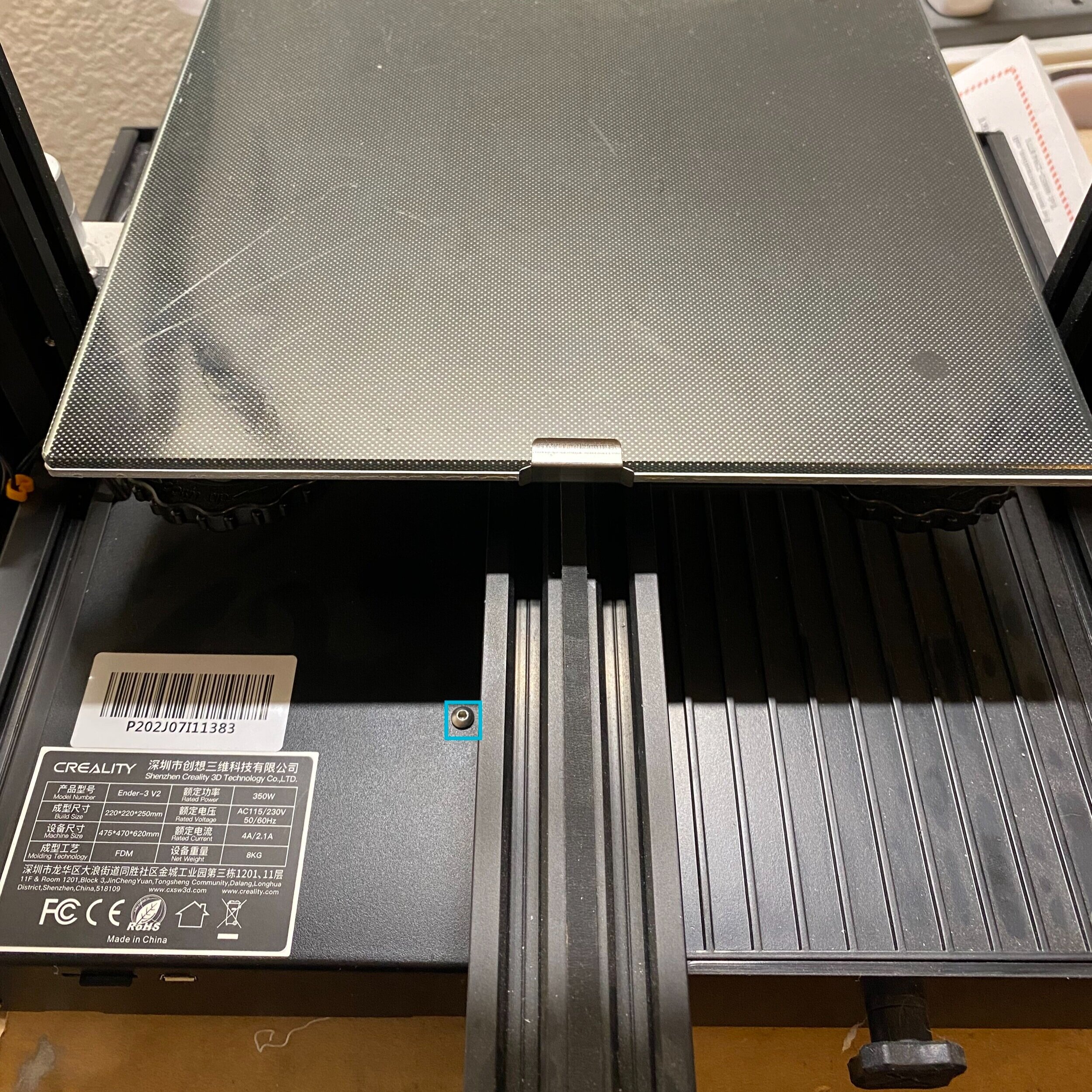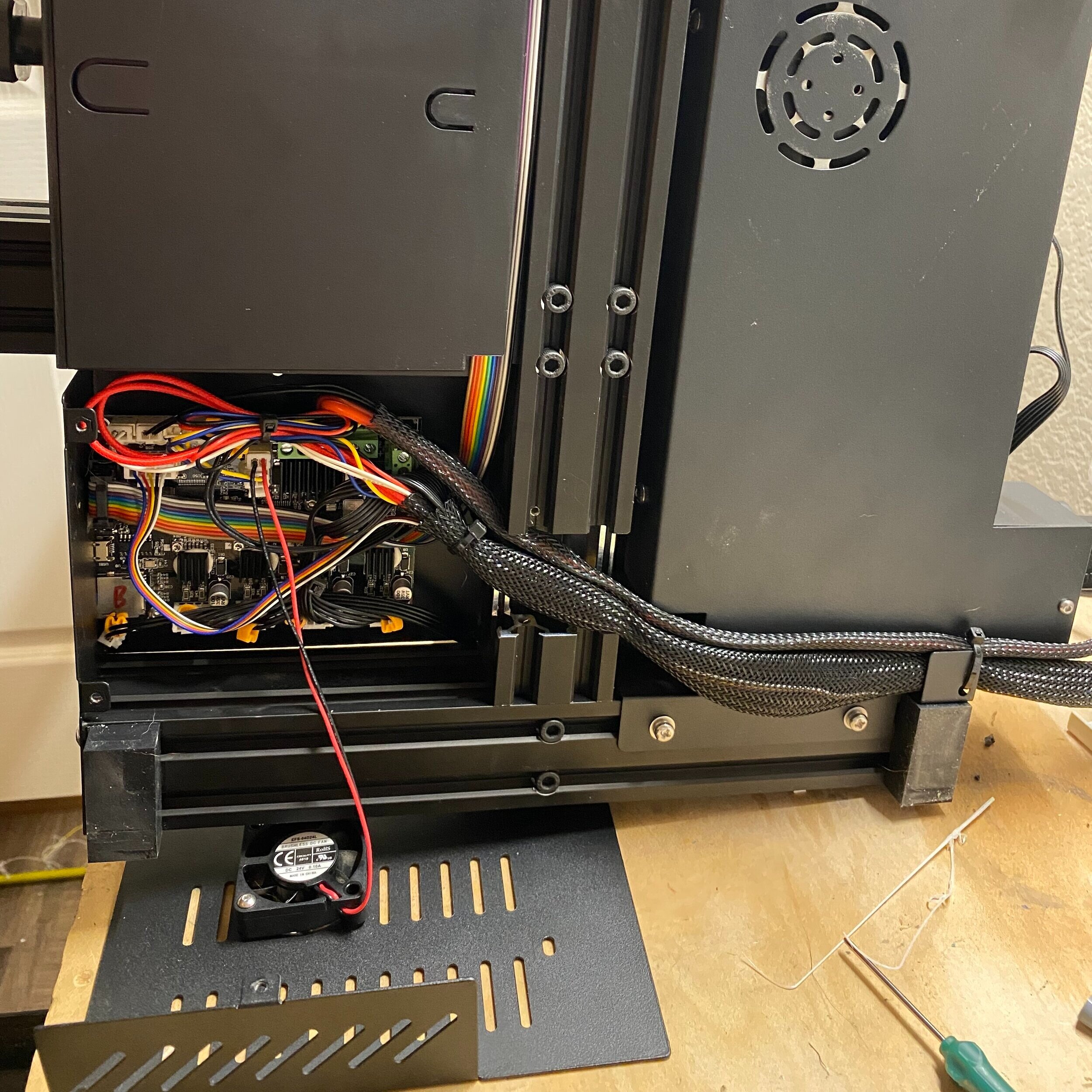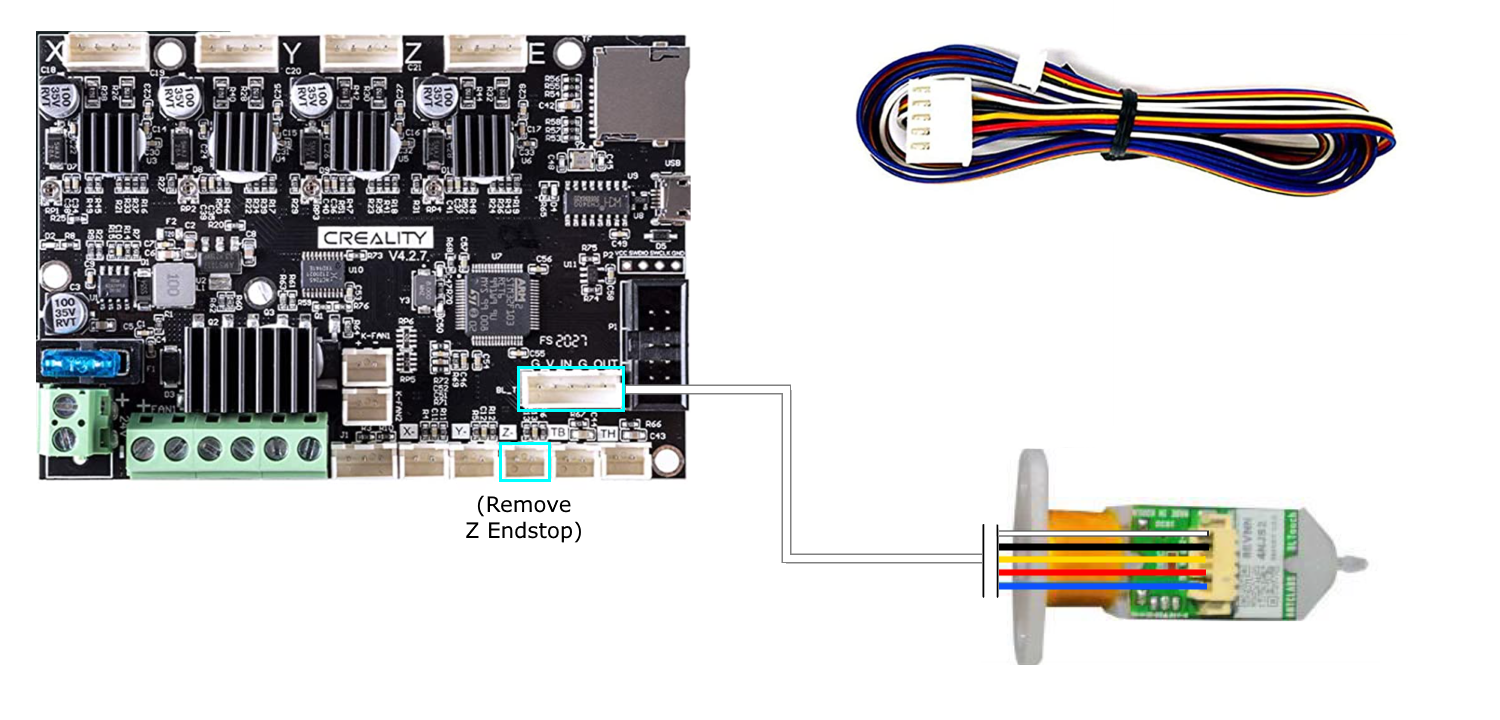Installing BLTouch Auto-Leveling on the Creality Ender 3 V2 / Ender 3 Max
Upgrading your Creality Ender 3 V2 with a BLTouch probe for auto-bed leveling will ensure your prints have perfect first layers every time and greatly reduce issues with bed adhesion. Additionally, the BLTouch allows better tolerances for slightly warped print beds by measuring and compensating for any inconsistencies. Many premium 3D printers include this feature standard, but fortunately it can also be installed on many lower cost 3D printers as an upgrade.
For more information on why we recommend the BL-touch sensor, refer to our Auto Bed Leveling Guide.
The images in this tutorial are of the Ender 3 V2, but the process is nearly identical for the ender 3 Max.
Note: Creality Experts receives a commission for items you purchase from this page, at no additional cost to you. For more information, please see our affiliate link policy.
The Ender 3 V2 BLTouch kit includes everything you need for the upgrade.
Required Materials
Creality Ender 3 V2 BLTouch Upgrade Kit (Amazon link).
Includes:BLTouch sensor
BLTouch cable
Mounting bracket for the Ender 3 V2
Allen wrenches included with printer
How to Install the BLTouch Automatic Bed Leveling Kit on Your Ender 3 V2 / Ender 3 Max
The BLTouch automatic bed leveling kit will contain everything you need to add the BLTouch probe to your Ender 3 V2. The BLTouch kit also contains detailed instructions to help you with the install.
Mount the BLTouch sensor to the hot end carriage
First, you will need to mount the probe on the printer using the provided bracket:
Use the 2 smaller screws included in the kit to mount the BLTouch sensor to the bracket.
Use the 2 longer screws to install the mount to the left of the hot end (there are two holes for this purpose).
Connect the small white port on the cable to the BLTouch sensor. Make sure it is facing the correct direction (it will only fit one way).
Use the included zip ties to route the BLTouch cable along the hot end cable toward the mainboard. This cable runs under the printer towards the mainboard enclosure. You can also route the cable through the wire mesh, but this is a bit more difficult.
Connect the BLTouch Sensor Cable to the Ender 3 V2 Mainboard
Before the next steps, you’ll need to gain access to the mainboard of your printer. Use the images below:
Remove the 3 screws on the underside of the printer…
…and the single screw under the print bed.
Carefully remove the mainboard enclosure, since the fan will still be connected to the mainboard.
Now you can attach the BLTouch cable to the mainboard:
Disconnect the Z endstop cable.
Plug the cable into the dedicated BLTouch port on the mainboard.
Note the mainboard version, which you will need when selecting the firmware in the next step. (It will either be 4.2.2 or 4.2.7)
Connecting the BLTouch to the dedicated port.
The attached BLtouch cable.
Update 3D printer firmware via SD Card
Using an SD Card of size 32GB or less, back up all files, then format the card using the FAT32 option.
Download the corresponding firmware with BLTouch support for your printer from Creality’s site: https://www.creality.com/download
(Note: be sure the version in the firmware file name matches the printed version number on the mainboard).Find the .bin file in the “Non-adapter” firmware folder.
Copy the firmware file only to the SD card.
Insert the card into the printer and turn on the printer. Wait for the firmware update to complete. The screen will be black for 10-20 seconds, then will show the loading screen.
Once the menu appears, remove the SD card. If you see a new “Level” menu option, the update was successful.
Note: if the UI is in Chinese, select the top left icon, then scroll down until you see an option set to “CN”. Click that option to change back to English.
Download the firmware package for your mainboard version from https://www.creality.com/download
Open the folder for the “Non-Adapter” firmware, since we are using the dedicated port. For Ender 3 Max, instaead use Ender-3 max 4.2.2mainboard bltouchfirmware.zip
Calibrate the Z offset for the BLTouch probe
The updated printer firmware will allow you to set the Z offset, which controls the position that the 3D printer considers to be “0” directly on the print bed. Follow these steps to calibrate the offset:
Auto home the 3D printer.
Place a sheet of paper under the nozzle, then move the Z position (Prepare » Move Axis » Move Z) to 0 (the auto home will end with Z around 10mm).
Select Back, then select Z Offset. Decrease the value by 0.1, then press the wheel to move the nozzle to the new position. Continue adjusting in small increments until you can move the paper under the nozzle, but feel some resistance. If the paper will not move, you’ve gone too far and should increase the Z offset.
In the same menu, select Disable Stepper to unlock the motors, and repeat the leveling process at each corner (just like standard leveling).
Move the nozzle to a corner of the bed.
Place your sheet of paper and adjust the leveling knob until you feel some resistance when moving the paper.
Repeat on each corner.
Now that the bed is level, fine tune your Z offset by repeating step 3.
Power the printer off and back on, then auto home the printer and verify that the nozzle is positioned correctly.
Replace the Gcode command “G28” in your slicer’s starting script with “G28 G29” to run mesh bed leveling before each print.
You are now ready to run a test print! We recommend testing with a model that has a large footprint to make sure the leveling is correct. If you notice that the first layer is too high or too low, you can “live adjust” the Z offset in the Tune menu if you notice that the first layer of your test print is too high or too low. Any changes you make here will persist for future prints as well.







